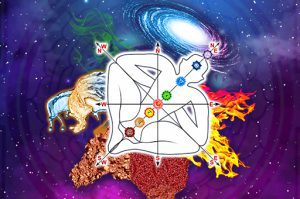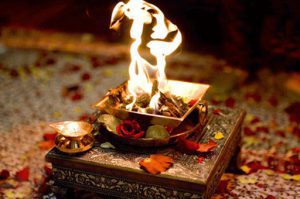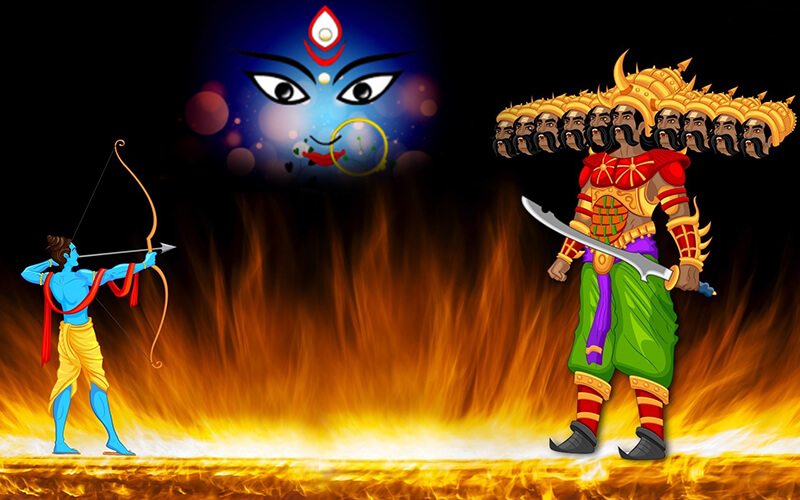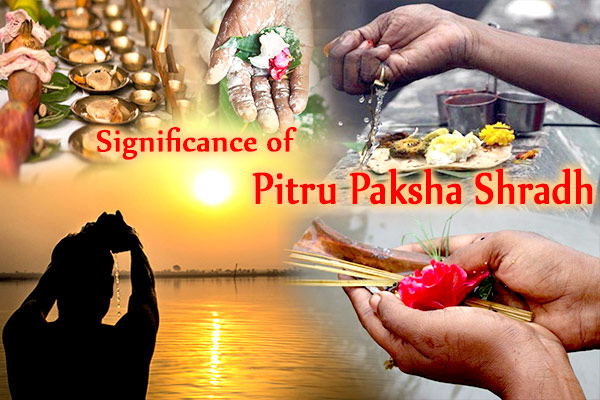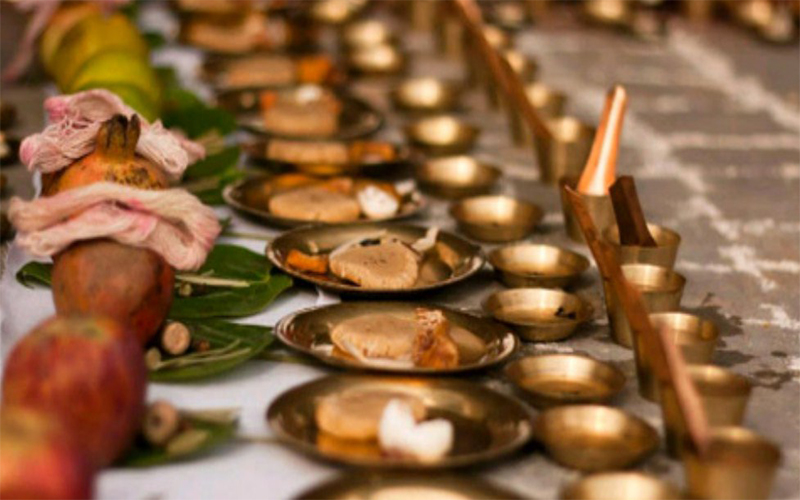
It is said that ancestors’ souls reside in Pitru Loka, the realm of ancestors. This is believed to be a place between heaven and earth. Yama governs the material world and transports souls to Pitru Loka. During Pitru Paksha, Yama releases these souls to visit their dear ones and take offerings from them. Pitru Paksha rituals free these ancestors to move on their journey forward.
What is Shradh?
Shradh is the remembrance of ancestors. Shradh is a Sanskrit term that translates to “anything done with sincerity and faith.” “Shradh” can also be translated as “Shraddha,” which means “unconditional reverence.” Shradh is performed every year on the death anniversary of a deceased relative, according to the Hindu calendar, or during the dark fortnight known as Pitru Paksha which falls in the lunar month of Bhadrapada or around September-October.
When are Shradh rituals held?
Pitru Paksha is a 16-day period in which Hindus honor their ancestors, primarily by offering food and prayers. The final day of Pitru Paksha is called Sarvapitri Amavasya or Mahalaya Amavasya. In addition to Pitru Paksha, similar rituals are performed on every month’s Amavasya (new moon) to honor the ancestors.
Mahalaya Amavasya is the most important day of Pitru Paksha celebrations.
When are Shradh rituals held in 2024?
This year, Pitru Paksha is observed from September 18th to October 2nd, 2024.
When to perform Shradh in Pitra Paksha
Shradh of your ancestors, deceased relatives, or family members should be performed on the specific tithi of their departure during the Pitru Paksha. If you don’t know the date of their passing, you can perform their Shradh on Ashwin Amavasya, also known as Sarvapitri Amavasya or Mahalaya Amavasya.
Shradh of a family member who has died unexpectedly due to accidents, suicide, etc., should be performed on the fourteenth day.
Shradh of the father should be performed on the eighth day and Shradh of the mother on the ninth day of Pitru Paksha.
Astrological Significance of Shradh
In astrology, when the Sun enters Virgo, it marks the start of “पितृ पक्ष” (Pitru Paksha), a period to honor ancestors. In a birth chart or “कुंडली” (Kundali), the fifth house represents past life deeds. In Vedic astrology, the Sun is the ruler of the fifth house. The Sun is considered the indicator of our lineage. During the sixteen-day period called Pitru Paksha, it is believed that when the Sun is in the Virgo zodiac sign, ancestors come down to Earth to bless their descendants. If ancestral rituals are not performed, it is believed that the ancestors may become displeased and could even curse their descendants.
Religious & Spiritual Significance of Shradh
Pitru Paksha, also called Shradh Paksha, is a significant 15-day period in the Hindu calendar. During this time, people perform rituals like offering tarpan (water oblations), pind daan (offering food to ancestors), shradh (rituals for the departed), and panchbali karma (sacrificial offerings) to seek liberation, appeasement, and forgiveness for their ancestors.
Pitru Paksha ceremonies, as mentioned in the Brahma Purana and other Vedic scriptures, aid departed souls in finding peace and transitioning to the next world. This is a religious practice with the purpose of removing ancestral curses, bringing happiness, peace, and prosperity to the family, and fostering the expansion of
the lineage. Ancestors’ displeasure can result in curses on descendants, causing conflicts, unrest, harm to the family, or difficulties in having children.
Pitru Paksha is mentioned in religious texts like Garuda Purana, Manusmriti, Vishnu Purana, and Bhagavata Purana, highlighting its significance in bringing peace and salvation to the souls of our ancestors.
Stories related to Pitru Paksha
In the Dvapara Yuga, during the Mahabharata war, Karna’s soul went to heaven after his death. He didn’t get regular food there. Karna was offered gold and jewelry as food. He felt disappointed and asked Bhagawan Indra why he wasn’t receiving true nourishment. Bhagawan Indra noted that although Karna had been generous in donating to others during his lifetime, he had neglected to do anything for his ancestors or forefathers.
Karna admitted he had no knowledge of his ancestors. Bhagawan Indra allowed Karna to come back to Earth for 15 days. During this time, Karna performed ancestral rituals (shradh) for his forefathers. These 15 days are now called Pitru Paksha.
According to the scriptures, Bhagwan Rama and Mata Sita performed Pind daan at the Falgu river banks in Bihar to bring peace to King Dasharatha’s soul. Pind daan is an effective way to help ancestors attain salvation. Performing Pind daan in Gaya is especially significant, although it is also performed in other places in the country.
What should we avoid doing during Pitru Paksha?
During Pitru Paksha, it is recommended to avoid jubilant events like weddings, engagements, or auspicious ceremonies as it is a time of dedication to honor our deceased ancestors.
- Avoid cutting your hair during the period of Pitru Paksha.
- One should avoid consuming non-vegetarian food during this period.
- Do not consume tamasic substances like onions, alcohol, tobacco, etc.
- Avoid initiating any auspicious activities such as starting a new project, buying a new house, or purchasing a new vehicle.
Pitru Paksha Rituals
To perform Shradh karma, invite a knowledgeable Brahmin to your home. This process has multiple stages described below.
- The first stage involves performing an abhishek (ritual bath) for Lord Ganesh and ishnu. Reciting the Purusha Suktam and Vishnu Sahasranama is very important.
- In the second stage, a mixture of barley, kusha grass, and black sesame seeds mixed with water is offered to gods, sages, and ancestors during tarpan. After performing tarpan, prayers are offered to ancestors to seek forgiveness for any mistakes.
- In the third stage, rice balls (pind) are offered to the ancestors during the pind daan ritual. The rice balls are made with rice, honey, milk, sugar, and barley. The Pitru mantra is chanted 108 times.
- The fourth stage also known as Panchbali a portion of the food is reserved for cows, dogs, crows, deities, and ants, before feeding the Brahmins and priests during the Shradh ceremony. Crows are seen as messengers of Yama, the god of death.
The ritual is considered complete after the Brahmins and Panchbali have eaten the meal.
What can you do at Home?
While performing Shradh, one must pay particular attention to three factors: piety, anger management, and avoiding haste. Meditation, mantra repetition, and prayer are done for the peace and attainment of salvation by the departed soul.
1. If you are doing it for a particular departed person and you know the date of death, then do the shradh as per tithi. If you are doing it for multiple people or do not know the tithi, then choose the last day, which is called Mahalaya Amavasya.
2. Wake up before sunrise, take a bath, and wear clean clothes, preferably of a light color. Try to fast on this day, and strictly avoid spicy food, non-vegetarian foods, tobacco, and drinks on this day.
3. Keep photographs of the deceased if you have them on the altar with a flower garland and a light lamp of sesame oil throughout the day, if possible.
4. Prepare food, keeping the ancestors in mind. Do prepare a rice and milk sweet dish, as it is a favourite of this day. You can keep vegetables like pumpkin, cabbage, French beans, yam or ridge gourd, cooked lentils, rice, a salad of cucumber and radish, and breads (fried puris). Whatever you remember as their favourite food, include that.
5. Shradh is done in the afternoon. Pray facing in the south direction.
6. If you can perform the following ritual of Tarpan and Pind Daan, then do this, or else book a puja and get it done on your behalf: take a wide copper vessel, put sesame seeds, cow milk, rice, Gangajal, white flowers, and water in it. Use only white flowers in Shradh. You keep Kusha in your hand, take water on it, and drop it in the same vessel. Do this 11 times while remembering your ancestors. Make balls of rice, honey, barley, sugar, and milk and offer them to ancestors.
7. Meditate on the Pitru mantra below:
https://youtu.be/xNgbdQLA8fY?si=e_-GIbzAL7ikOfgV
8. Offer food on a plate prepared for ancestors. Separate food is taken out for Panchbali, i.e., deity, cow, dog, crow, and ant. You can bury the food on earth in their names if you cannot find them around your home.
9. If you have called some Brahmins or Brahmin couple at home, then offer them the food along with some money and clothes. Or else take some money for charity in their name and use it later for a good cause.
Conclusion
Pitru Paksha is a sacred period that holds great significance in the realm of spiritual redemption. It is a time when one can seek solace and liberation from the burdens of Pitru dosh, the negative karmic imprints left behind by our ancestors.
The sacred rituals serve as a purifying force, cleansing the soul of its burdensome karmas and actions of the past. In doing so, they guide us with greater clarity and divine grace.



